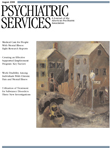Individuals with schizophrenia die 25 years earlier than the general population—a number now well publicized in this country thanks to the efforts of the National Association of State Mental Health Program Directors and others. Excess mortality is of course true world wide as well. Stefan Leucht and colleagues start with this sobering fact in Physical Illness and Schizophrenia: A Review of the Evidence. They set out to tell us what we know about physical illness as it relates to schizophrenia with the expressed purpose of encouraging recognition and intervention earlier in the course of physical illness. Many individuals with schizophrenia receive very limited medical care, and when they do receive care it is often at a point when physical illness is severe or even life threatening.
The authors have done an exhaustive Medline search from 1966 to May 2006 to look at epidemiological studies of the association between schizophrenia and physical illness. They have specifically avoided including mortality studies and studies that focus primarily on the side effects of medications. Some information is grouped by types of illness, such as infectious disease, cancer, hereditary and neonatal diseases, nutritional and metabolic diseases, and immunologic disorders. The rest of the information is organized anatomically, including diseases of the nervous system, urogenital disorders, gynecologic and pregnancy-related disorders, and cardiovascular disease. In each subset the authors point out the number of hits on MEDLINE. This is followed by a brief discussion of how they determined which articles to include. In addition to searching MEDLINE, they routinely examined cited references and sought expert opinion to ensure completeness.
Some topics have only a few noteworthy studies that the authors summarize. Other areas, such as HIV infection, cancer, complications of pregnancy, cardiovascular disease, metabolic illness, polydypsia, thyroid disease, and rheumatoid arthritis, have an extensive database. Detailed tables assist the reader in reviewing theses studies chronologically. Tables include location, research questions, the study and control populations, main findings, data source, and conclusions. Tables do not include how the diagnosis of schizophrenia was made in the study populations, and some studies include other psychiatric diagnostic groups. Forty percent of the studies used come from the United States; the rest are from Europe and elsewhere.
This book will be particularly useful for those doing research on co-occurring medical illness and those researching schizophrenia both in psychiatry and in general medicine. Those involved in public policy regarding service delivery and research funding will find a wealth of information, as well as an appreciation for the limits of our current knowledge. The book does not address the systems issues of how to improve the quality of medical care and interventions for this population, but it challenges the reader to be part of taking the next step in addressing these critical issues.

